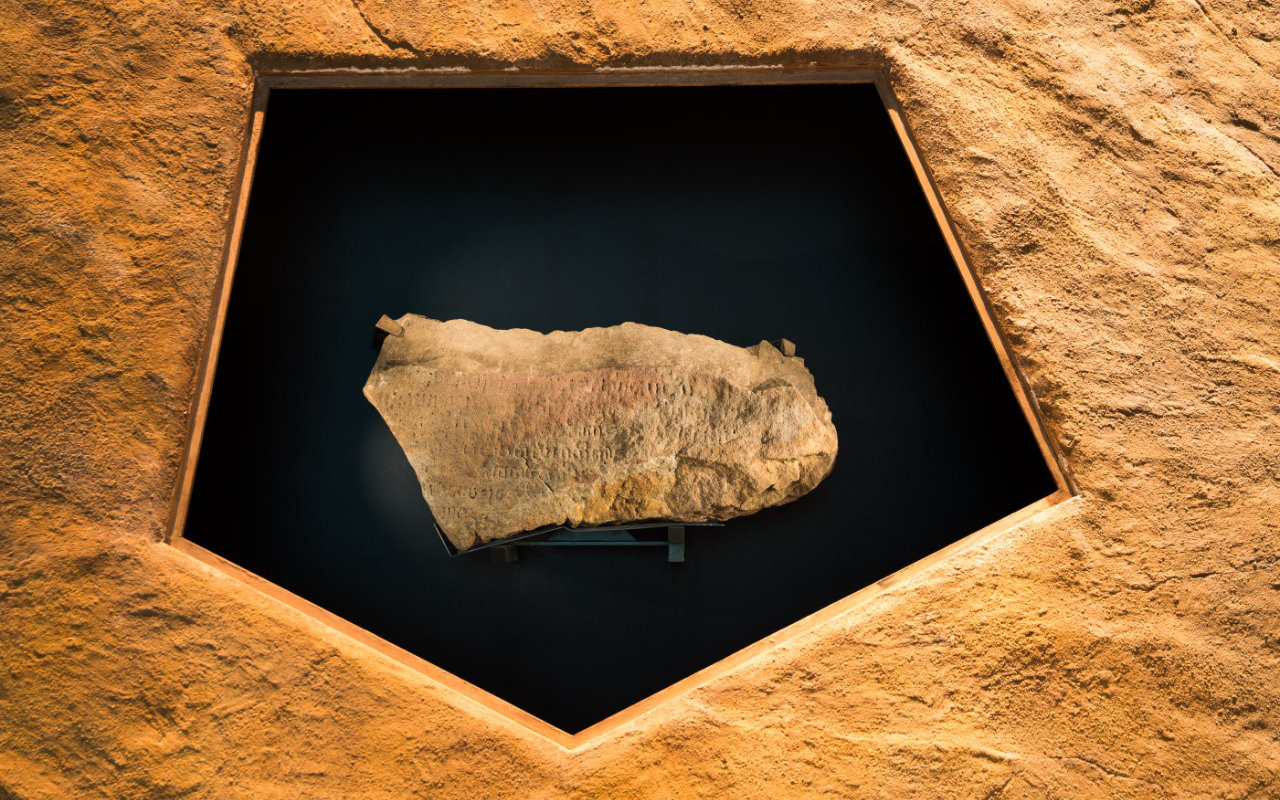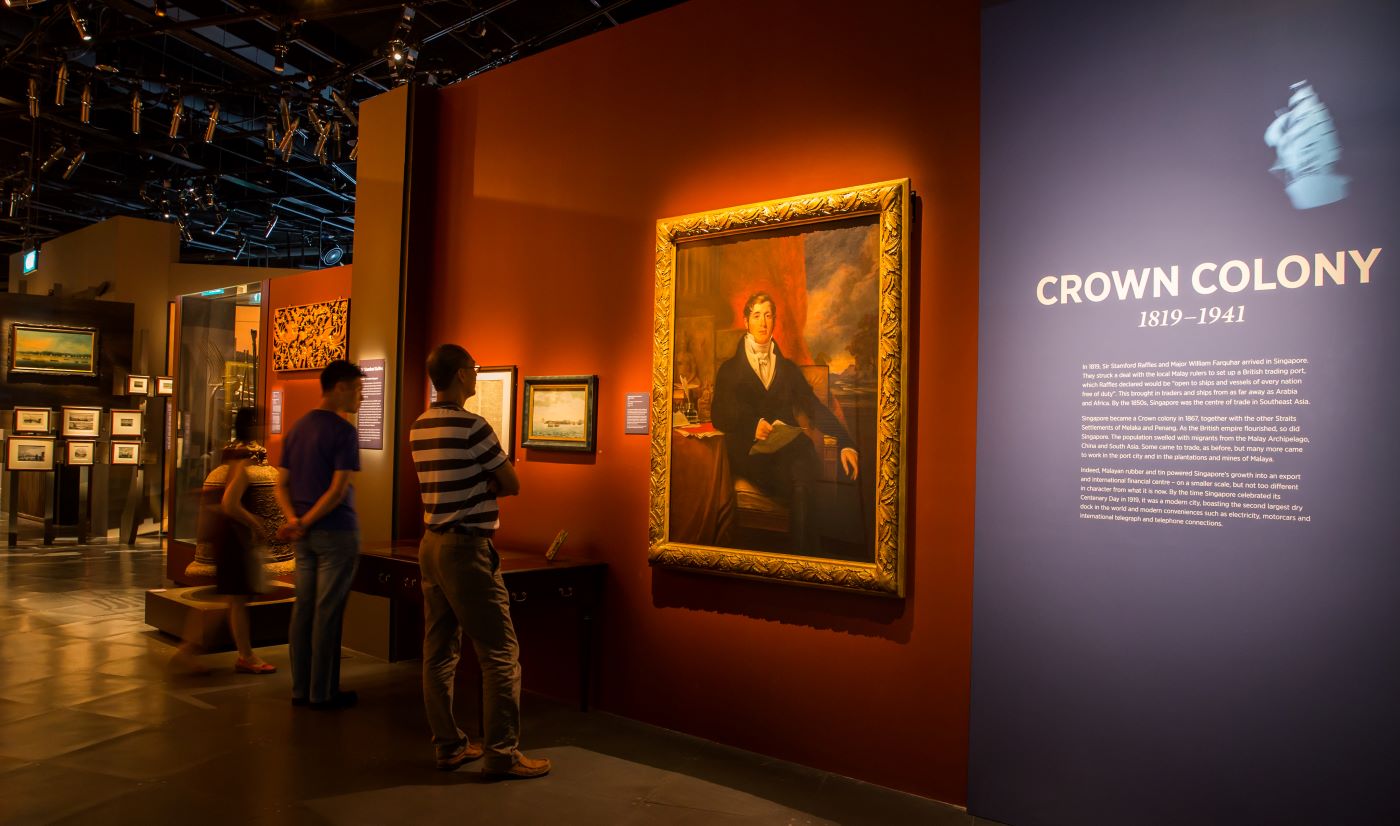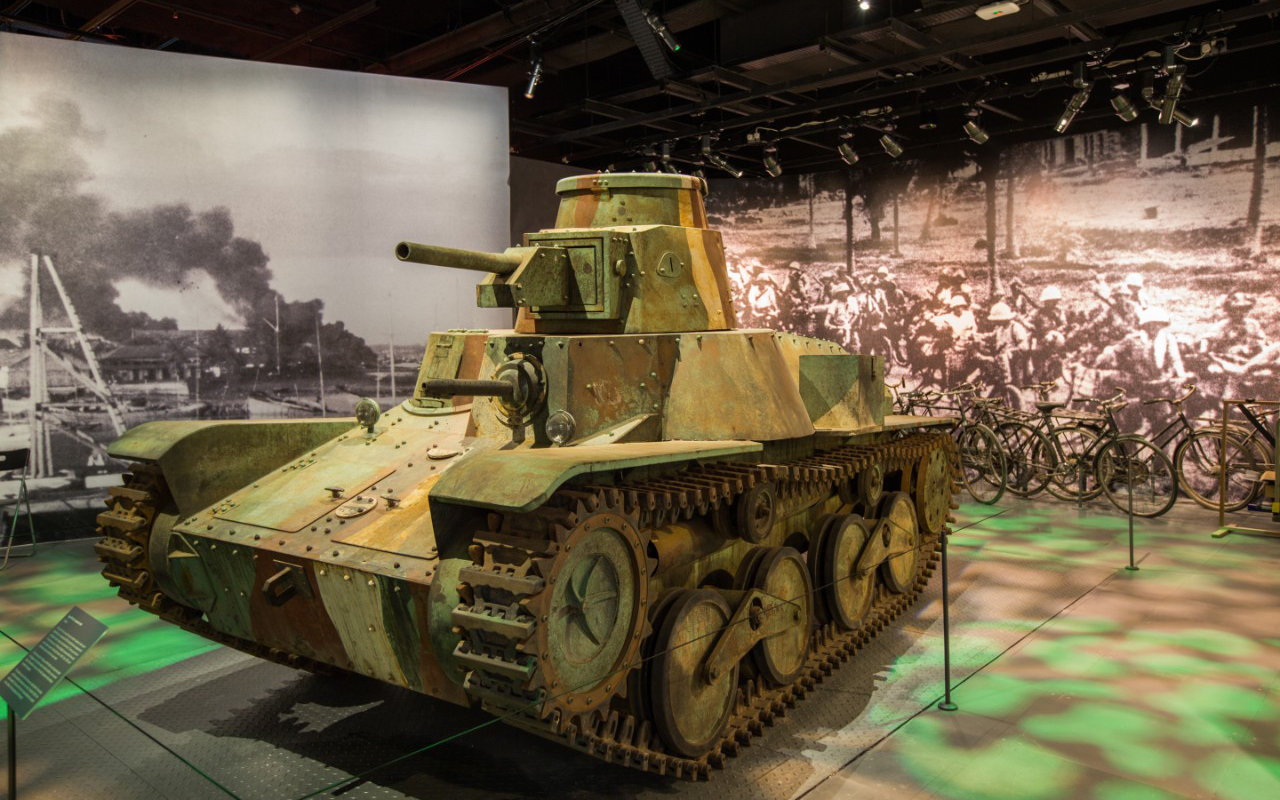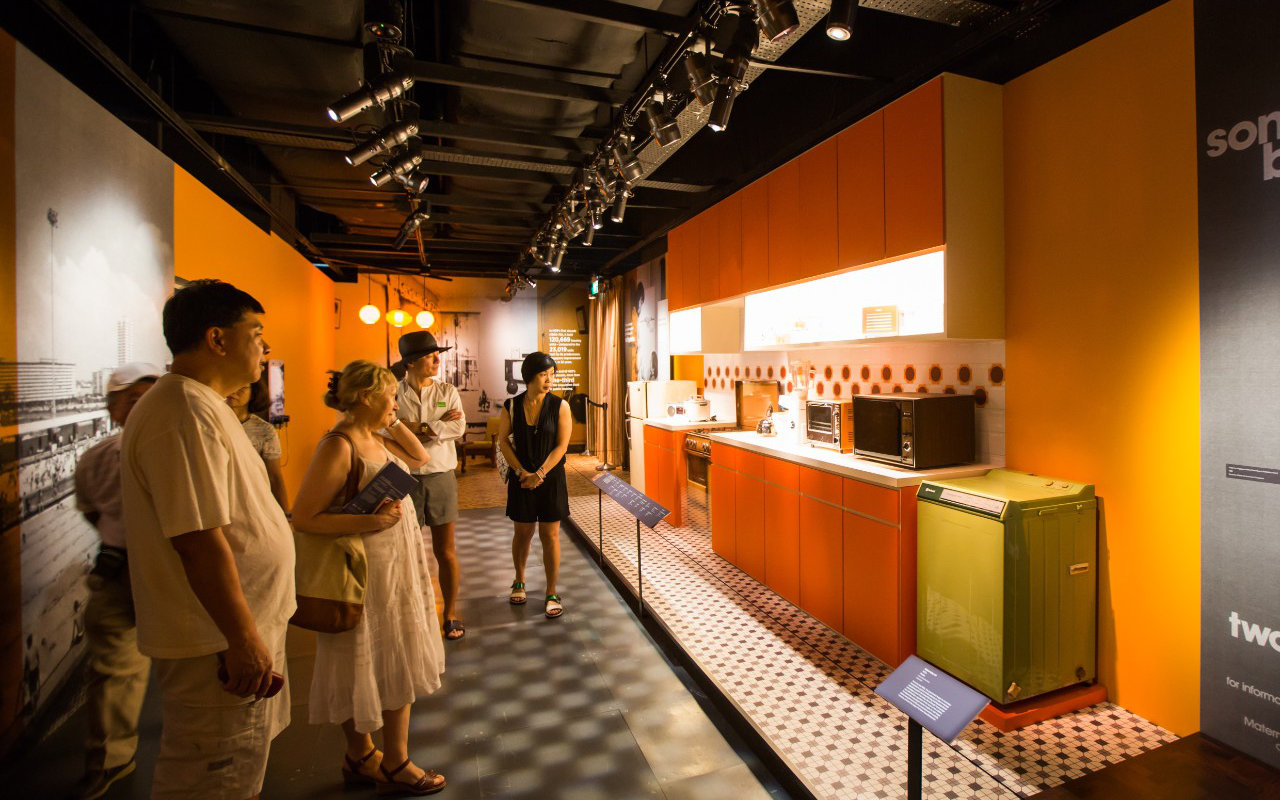Our Singapore History Gallery is closed for a revamp and will reopen in October 2026 with a whole new experience. Visitors may continue to visit our Once Upon a Tide special exhibition and Singapore Odyssea experience, which will remain open during this period.
The Exhibition
Journey back in time at the National Museum of Singapore and rediscover Singapore's past through the artefacts and stories of those who lived it. The Singapore History Gallery is divided into four sections: Singapura, Crown Colony, Syonan-To and Singapore.
Singapura (1299 – 1818)

Prehistoric tools discovered in Western Singapore and on Pulau Ubin – an island off mainland Singapore’s north-eastern coast – suggest that a settlement may have existed from as early as several thousand years ago. The earliest written records to mention Singapore describe it as a thriving port in the 14th century. The Chinese traders called it Danmaxi (Temasik or Temasek). The Sejarah Melayu (the Malay Annals) called it Singapura.
Learn about the lives of Singapore’s earliest inhabitants, and see the unearthed artefacts that survive to this day.
Crown Colony (1819 – 1941)

In 1819, Sir Stamford Raffles and Major William Farquhar struck a deal with the local Malay rulers to set up a British trading port. Traders and ships came bearing their wares from as far away as Arabia and Africa. Migrants flocked to the island, bringing with them their unique customs and ways of life. Learn about key historical figures and how they helped transform Singapore into the centre of trade in Southeast Asia.
Syonan-To (1942 – 1945)

In February 1942, Japanese forces invaded, swiftly overwhelming British defenses and capturing the island. Singapore was placed under military occupation and renamed Syonan-To, “Light of the South” in Japanese. The local population suffered food and fuel shortages, disease, and – at its worst – harassment, violence and killings.
Trace the unfolding of key events and explore a wide range of military artefacts from World War II. Discover life under the Japanese Occupation through our collection of wartime personal belongings, photographs and documents, and learn how people responded with resourcefulness and fortitude during this difficult period.
Singapore (1945 – present)

In 1959, the British granted Singapore self-government. Following a merger and then separation from Malaysia, Singapore became a fully independent nation on 9 August 1965. The new government had to tackle challenges from unemployment and housing shortages to maintaining racial and religious harmony.
Through vintage objects and media from the early years of independence, discover the key developments that helped to turn Singapore into the nation it is today.